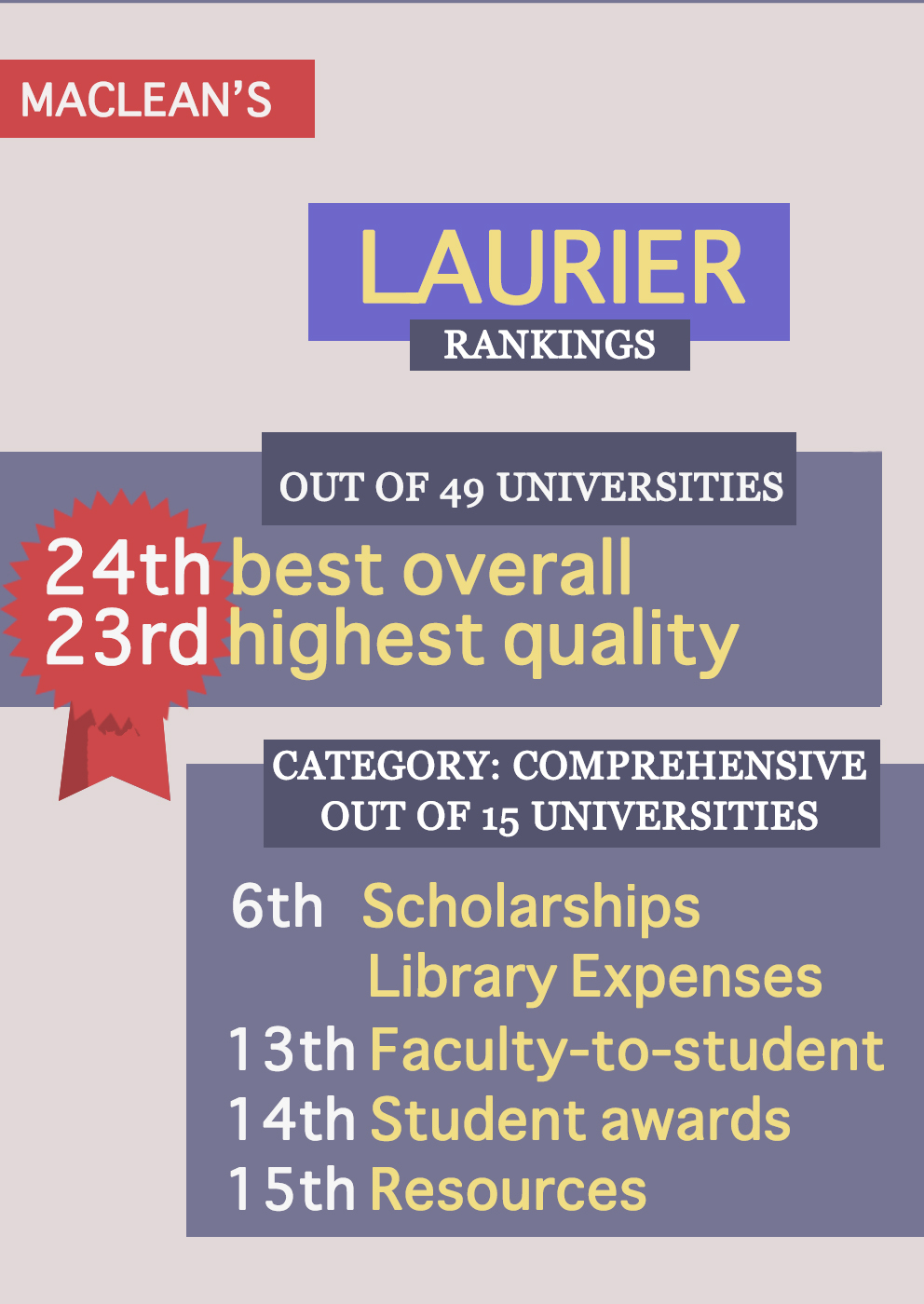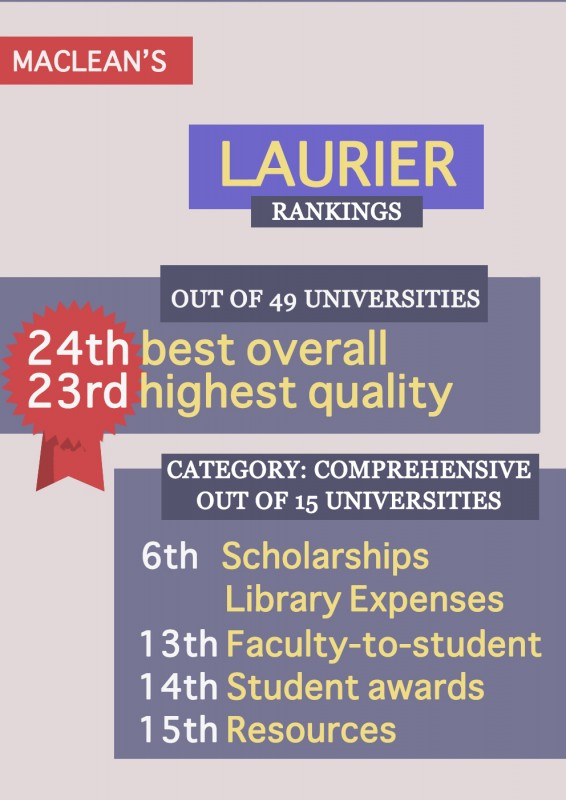Laurier sits in the ‘middle of the pack’

Maclean’s university rankings place WLU 24th overall

The annual Maclean’s magazine university rankings were released in late October, scoring Wilfrid Laurier University in the middle of its respective category.
Laurier, which is placed in the “comprehensive” category — which means the university has “a significant amount of research activity and a wide range of programs at the undergraduate and graduate level, including professional degrees” — placed 24th of 49 total universities in “best overall” and 23rd overall in “highest quality.”
When looking at just the comprehensive universities within the ranking of best overall, Laurier is seventh out of the 15 in its category.
However, in the overall ranking of the comprehensive category, Laurier ranked 13th, a drop from their 2014 ranking where they tied for 10th.
According to Kevin Crowley, director of communications, public affairs and marketing at Laurier, the university is pleased with their rankings this year.
“The rankings are always rankings and you have to take them with a grain of salt because it’s not necessarily the methodology you’d follow,” he said. “But overall, we did pretty well in what we would consider the most important categories.”
Maclean’s assesses universities on several different factors and allocates a varied weight to each. There are six broad areas that are indicators, including students and classes, faculty “prestige,” financial resources, student support, library resources and the reputation from external sources. These are all combined to make up a portion of the overall score for each university.
Crowley said Laurier has “held their own” in best quality, best overall and best reputation — the three categories the university says are most important.
“[We’re] sort of middle of the pack within the comprehensive category,” he said.
For the individual areas, Laurier’s scores varied from fourth in their respective category to bottom of the pack at 15th.
They were ranked 14th for student awards, 13th for faculty-to-student ratio, while scoring a tie for sixth in both scholarships and bursaries and library expenses.
The lowest score for Laurier this year in the rankings was in resources. For total research dollars, Laurier came in at 15th of 15 universities in the comprehensive category, putting an average of $24,455 toward research. This figure is the total income from sponsored research divided by the number of full-time faculty.
Crowley explained in an e-mail that the results of this category “don’t reflect the enormous amount of time and resources that Laurier has invested in enhancing the university’s research activities.” He explained that Laurier’s new strategic research plan was created in 2013 to guide research support and goals at Laurier from 2014 to 2019 and since 2007 research funding has increased 88 per cent.
In terms of student support, Laurier tied for sixth in their category for scholarships and bursaries and fourth in their category for student services — their highest ranking this year.
According to Sam Lambert, president and CEO of the Wilfrid Laurier University Students’ Union, this is a reflection of the working relationship between the Union and student affairs.
“I think it shows the work that has been put in over the years to make sure the students are supported in a variety of ways, and shows that we’re continuing to work towards providing the best support possible,” he said.
Overall, 95 per cent of Laurier students that filled out the Canadian University Survey Consortium said they were satisfied with their decision to attend the university. Crowley thinks that is because of the “well-rounded” experience students get.
“People seem to choose Laurier for the overall experience here,” he said.
“Students come out with a great academic background, but also great leadership experience and a lot of real-world experience … just a very strong, well-rounded experience.”
Crowley explained that the university must be strategic when evaluating which areas to improve on.
“You can’t move up in everything, you have to be strategic about it, so we’re in the process of taking a look at those categories and seeing what it would take to move us up,” he said.
“You have to make decisions about where you put your resources and we’re in that process of just reviewing it.”


